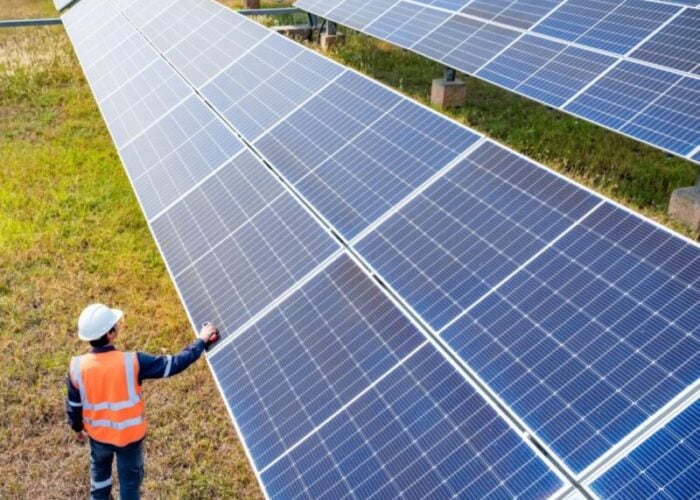Single-axis solar tracker firm, Soltec has reported a range of bifacial module and tracker performance results from its Bifacial Tracker Evaluation Center (BiTEC) in Livermore, California, showing an advantage in using a 2P configuration and an overall bifacial gain of 15.7%.
The year-long field test (September of 2018 to September of 2019) highlighted that bifacial modules deployed on its SF7 Bifacial tracker in a 2P configuration exhibit a Bifacial Gain that is 2.1% higher than that of the same modules in 1P configuration.
Unlock unlimited access for 12 whole months of distinctive global analysis
Photovoltaics International is now included.
- Regular insight and analysis of the industry’s biggest developments
- In-depth interviews with the industry’s leading figures
- Unlimited digital access to the PV Tech Power journal catalogue
- Unlimited digital access to the Photovoltaics International journal catalogue
- Access to more than 1,000 technical papers
- Discounts on Solar Media’s portfolio of events, in-person and virtual
Bifacial modules also provided 15.7% more Bifacial Gain under high albedo conditions (55.6%) (white sand or snow-covered ground) and 9.6% under medium albedo conditions (29.5%), compared to monofacial modules. The company also reported that for cultivation areas with an albedo of 19.9%, the bifacial gain of a 2P SF7 bifacial tracker is 7.3%.

The results in this annual report were made with Jolywood’s JW-D72N-355 bifacial modules.
Such field testing has become a key requirement to support better data analysis of the overall performance gains of bifacial modules that can then be used with modelling software improvements for bankability.





